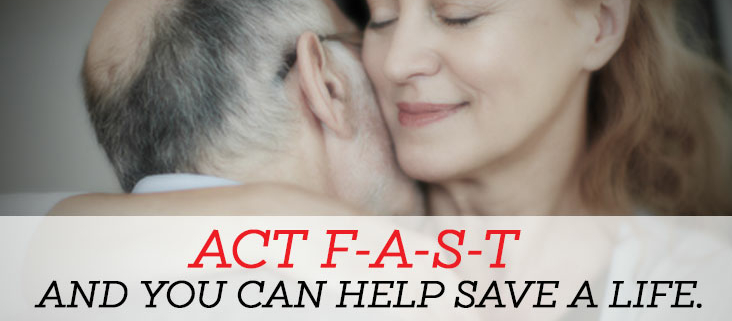FAST is an easy way to identify the most common symptoms of stroke:
F – Face drooping. Ask the person to smile. Note if one side of the face is drooping.
A – Arm weakness. Ask the person to raise both arms to the side. See if one drifts downward.
S – Speech difficulty. Ask the person to repeat a simple phrase. Listen if the speech is slurred or strange.
T – Time to call 911. If you observe any of these signs, call for help immediately.
Take note of the time of the first symptom so you can tell medical personnel because this can affect treatment decisions. Rapid access to medical treatment can make a difference between full recovery and permanent disability.
Other symptoms of a stroke also may include sudden onset of:
- Confusion, trouble speaking or understanding what someone is saying
- Numbness or weakness of face, arm or leg – especially on one side of the body
- Trouble seeing out of one or both eyes
- Severe headache with no known cause
- Trouble walking, dizziness, loss of balance or coordination
Even if you’re unsure if someone is having a stroke, don’t delay in calling 911 to get the person medical help immediately.



